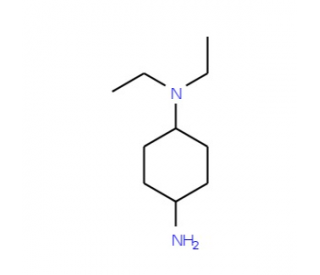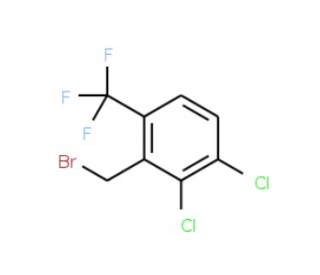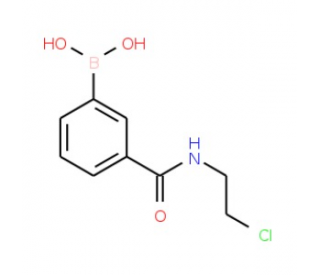详细说明
Species Reactivity
Mouse
Specificity
Detects mouse SorCS3 in direct ELISAs and Western blots. In direct ELISAs, approximately 40% cross-reactivity with recombinant human SorCS3 is observed, approximately 7% cross-reactivity with recombinant mouse (rm) SorCS1 is observed, and less than 2% cross-reactivity with rmSorCS2 is observed.
Source
Polyclonal Goat IgG
Purification
Antigen Affinity-purified
Immunogen
Mouse myeloma cell line NS0-derived recombinant mouse SorCS3
Ala131-Ser1122
Accession # Q8VI51Formulation
Lyophilized from a 0.2 μm filtered solution in PBS with Trehalose. *Small pack size (SP) is supplied as a 0.2 µm filtered solution in PBS.
Label
Unconjugated
Applications
Recommended
ConcentrationSample
Western Blot
0.1 µg/mL
Recombinant Mouse SorCS3 (Catalog # )
Immunohistochemistry
5-15 µg/mL
See below
Blockade of Receptor-ligand Interaction
In a functional ELISA, 1.5-6 µg/mL of this antibody will block 50% of the binding of 1 μg/mL of Recombinant Human beta -NGF (Catalog # ) to immobilized Recombinant Mouse SorCS3 (Catalog # ) coated at 4 µg/mL (100 µL/well). At 30 μg/mL, this antibody will block >90% of the binding.
Please Note: Optimal dilutions should be determined by each laboratory for each application. are available in the Technical Information section on our website.
Data Examples
Immunohistochemistry | SorCS3 in Mouse Brain. SorCS3 was detected in immersion fixed frozen sections of mouse brain (hippocampus) using 10 µg/mL Goat Anti-Mouse SorCS3 Antigen Affinity-purified Polyclonal Antibody (Catalog # AF3067) overnight at 4 °C. Tissue was stained with the NorthernLights™ 557-conjugated Anti-Goat IgG Secondary Antibody (red, upper panel; Catalog # ) and counterstained with DAPI (blue, lower panel). View our protocol for . |
Preparation and Storage
Reconstitution
Reconstitute at 0.2 mg/mL in sterile PBS.
Shipping
The product is shipped at ambient temperature. Upon receipt, store it immediately at the temperature recommended below. *Small pack size (SP) is shipped with polar packs. Upon receipt, store it immediately at -20 to -70 °C
Stability & Storage
Use a manual defrost freezer and avoid repeated freeze-thaw cycles.
12 months from date of receipt, -20 to -70 °C as supplied.
1 month, 2 to 8 °C under sterile conditions after reconstitution.
6 months, -20 to -70 °C under sterile conditions after reconstitution.
Background: SorCS3
SorCS3 is a type I transmembrane receptor of the mammalian Vps10p (vacuolar protein-sorting 10 protein) family of receptors that includes sortilin, SorLA, and three SorCS proteins (1, 2). It is synthesized as a 1219 amino acid (aa) preproform with a 33 aa signal sequence and a 100 aa propeptide. After proteolytic release of the propeptide at a furin-type consensus sequence, the mature SorCS3 is a 1086 aa, 100-110 kDa protein with a 992 aa extracellular/lumenal domain (ECD), a 21 aa transmembrane domain and a 73 aa cytoplasmic domain. Mouse SorCS3 ECD shares 98%, 92%, 91%, and 89% aa sequence identity with rat, human, bovine, and canine SorCS3 ECD, respectively. It also shares 65% and 44% aa identity with mouse SorCS1 and SorCS2 ECD, respectively. The ECD contains an imperfect leucine-rich repeat (LRR) and a Vps10p domain that binds both pro- and mature NGF (2, 3). The metalloproteinase TACE/ADAM17 is able to cleave SorCS3 near the membrane either constitutively, or at an increased rate when induced by phorbol esters (4). The shed ECD is able to bind PDGF-BB and the NGF propeptide (4). Unlike sortilin, the SorCS3 propeptide has no known function; it does not block NGF binding or propeptide cleavage (3, 5). SorCS3 is predominantly expressed on the plasma membrane (3). It can be slowly internalized but, despite the presence of a sorting domain, there is no evidence for SorCS3-mediated intracellular trafficking activity (3). It is expressed in the embryonic and adult central nervous system in areas distinct from that of SorCS1 and SorCS2 (1). Neuronal activity upregulates SorCS3 expression in the hippocampus (1).
References:
Hermey, G. et al. (2004) J. Neurochem. 88:1470.
Hampe, W. et al. (2001) Hum. Genet. 108:529.
Westergaard, U.B. et al. (2005) FEBS Lett. 579:1172.
Hermey, G. et al. (2006) Biochem. J. 395:285.
Westergaard, U. et al. (2004) J. Biol. Chem. 279:50221.
Long Name:
Sortilin-related VPS10 Domain Containing Receptor 3
Entrez Gene IDs:
22986 (Human); 66673 (Mouse); 294043 (Rat)
Alternate Names:
6330404A12Rik; KIAA1059SORCS; SorCS3; sortilin-related VPS10 domain containing receptor 3; VPS10 domain receptor protein SORCS 3 (SORCS3); VPS10 domain-containing receptor SorCS3










 粤公网安备44196802000105号
粤公网安备44196802000105号